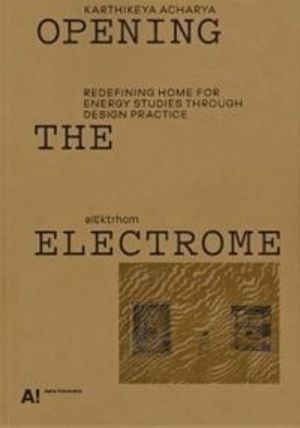This thesis as an energy study makes use of domestic energy use information for design practice. The longitudinal study is framed through the interpretation and critique of four prior approaches from design, art and architecture, namely Empathic Design, Interrogative Design, Relational Aesthetics and Critical Regionalism.The study presents the concept of the lktrhom as a dwelling process and place. It is where sensorial experiences of people by the means and measures of standardized electrical and electronic technologies form, are normalized and get justified. Housing concerns from a cultural geographical, anthropological and post-human architectural perspective of the everyday home, the Electrome encounters the body as its final bastion. Through the presentation of this concept for contemporary dwelling, the study presents three different positions for a design practice, for inquiry, for prototyping and as a discrete activism. Holding these multiple positions, the thesis presents the idea that practising design can generate multiple agendas as coherent action.
This thesis as an energy study makes use of domestic energy use information for design practice. The longitudinal study is framed through the interpretation and critique of four prior approaches from design, art and architecture, namely Empathic Design, Interrogative Design, Relational Aesthetics and Critical Regionalism.The study presents the concept of the lktrhom as a dwelling process and place. It is where sensorial experiences of people by the means and measures of standardized electrical and electronic technologies form, are normalized and get justified. Housing concerns from a cultural geographical, anthropological and post-human architectural perspective of the everyday home, the Electrome encounters the body as its final bastion. Through the presentation of this concept for contemporary dwelling, the study presents three different positions for a design practice, for inquiry, for prototyping and as a discrete activism. Holding these multiple positions, the thesis presents the idea that practising design can generate multiple agendas as coherent action.













